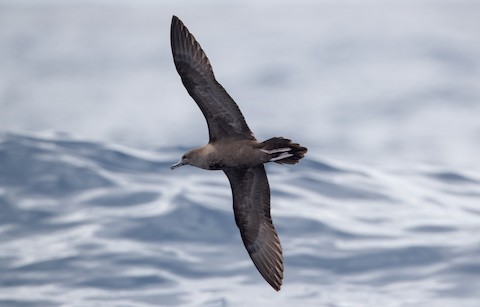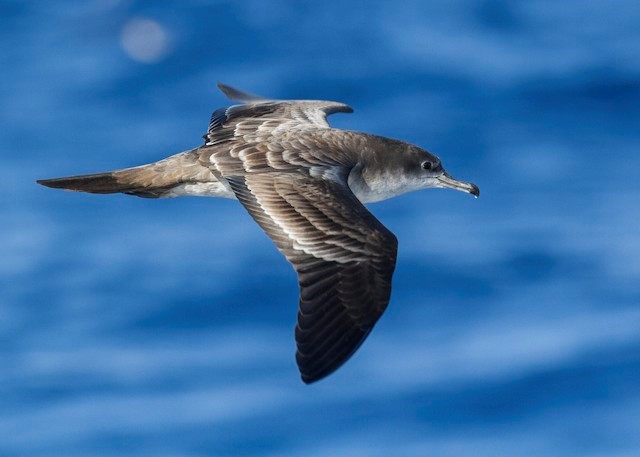Birdfinding.info ⇒ Common over much of its tropical Pacific range, but uncommon and local in the Indian Ocean. It is especially numerous across a wide arc that stretches from the entire eastern coast of Australia east across the Coral and Tasman Seas, then northeast across Melanesia to Tahiti, then north through Kiritimati to Hawaii. It is readily seen on pelagic trips in eastern Australia, such as the ones out of Southport, Kiama, and Sydney. In Hawaii, it can be seen around all the main islands, including various seawatch points and breeding colonies, such as: on Kauai at Kilauea Point National Wildlife Refuge, Ninini Point in Lihue, and Makahuena Point in Poipu; on Oahu at Ka’ena Point and Makapu’u Point; near Maui on Molokini Islet; and on the Big Island at Keahole Point. In Mexico and Central America, it can be found on pelagic trips from various ports, including Puerto Angel and Santa Cruz Huatulco in Oaxaca.
Wedge-tailed Shearwater
Ardenna pacifica
Tropical Pacific and Indian Oceans.
Breeding. Widespread across most the tropical Pacific, breeding from islets around Taiwan and Japan’s Ogasawara Islands east across Micronesia to Hawaii and Mexico’s Revillagigedo Islands (San Benedicto), south through Melanesia to the Great Barrier Reef of Australia, and east through all of the major archipelagos of Polynesia east to Tuamotu.
In the Indian Ocean, it breeds on the Seychelles, Mauritius, Réunion, Diego Garcia, and Cocos (Keeling), and islets along the western coast of Australia.
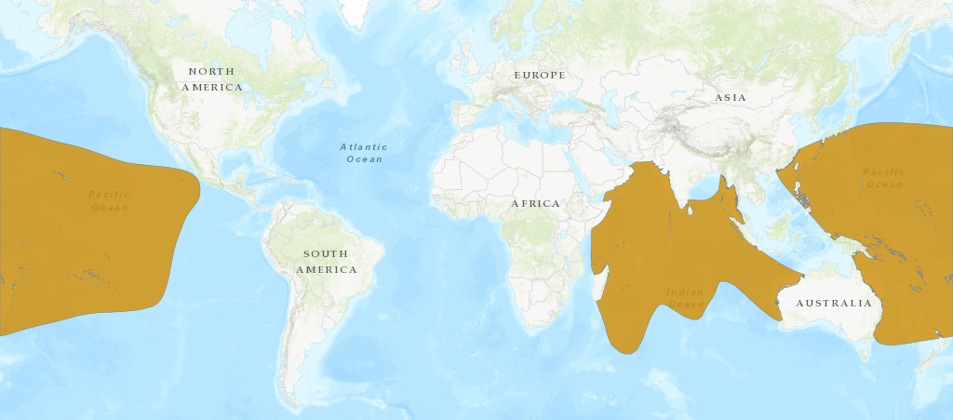
Approximate at-sea distribution of Wedge-tailed Shearwater. © BirdLife International 2018
Nonbreeding. Disperses at sea in the general vicinity of its breeding grounds, generally remaining in warm water.
Significant numbers are present year-round, but especially from November to June, in the eastern tropical Pacific from Baja California to Ecuador. Most of these are pale morphs, although the only known breeding colony in the region (San Benedicto) is almost all dark morphs, which suggests that many nonbreeders from distant populations regularly migrate east.
Identification
A medium-large, lean shearwater with proportionately small head, long, thin bill, and longish, wedge-shaped tail. The most variable shearwater, it exhibits a wide array of plumages and bill colors, and can be confusing to identify.
Sometimes characterized as having two morphs—pale and dark—but this does not fully describe the diversity of its plumages. It would be more accurate to say that it has a few plumage morphs plus a significant amount of intermediate variation.
With its diversity of plumages, Wedge-tailed can closely resemble each of the other large Pacific shearwaters. The length and shape of its tail are distinctive, but this varies with molt-stage and viewing conditions, so it is sometimes a useful characteristic, but not always. (See comparisons to other shearwater species below.)
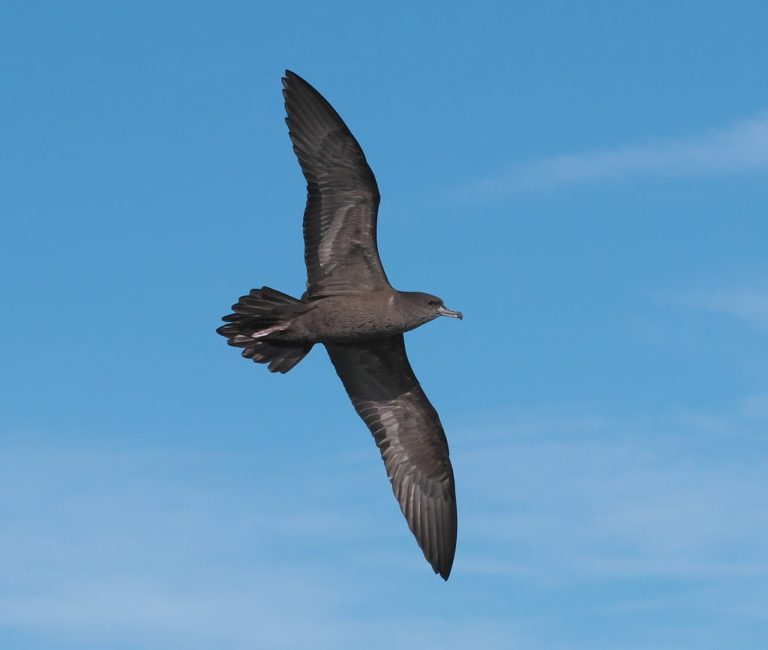
Wedge-tailed Shearwater, ventral view of dark morph, showing shape of tail when spread. (Offshore from Swansea, New South Wales, Australia; November 3, 2018.) © Gavin Edmondstone
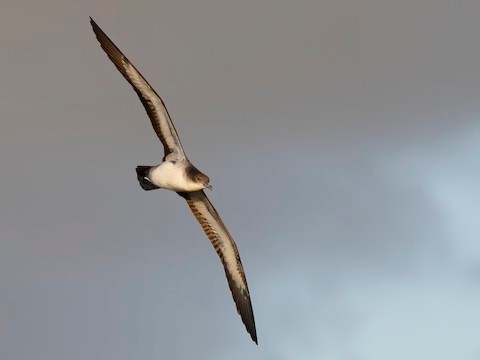
Wedge-tailed Shearwater, pale morph showing square tail, likely due to molt-stage. (Ka’ena Point, Oahu, Hawaii; April 6, 2019.) © Sharif Uddin
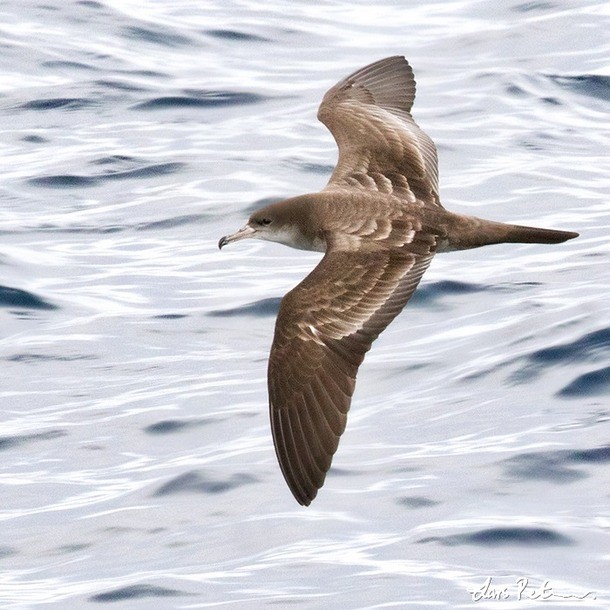
Wedge-tailed Shearwater, dorsal view of pale morph with brown-and-white upperparts, showing shape of tail when held closed—note dark-tipped pink bill. (Ogasawara Islands, Japan; May 28, 2017.) © Lars Petersson

Wedge-tailed Shearwater, showing shape of tail when spread. (Offshore from Southport, Queensland, Australia; April 28, 2019.) © Deborah Metters

Wedge-tailed Shearwater, pale morph with upperparts pattern similar to Buller’s and ambiguous tail shape. (East of Chichi-jima, Bonin Islands, Japan; April 24, 2012.) © James Holmes
In most Wedge-tailed Shearwater populations, one morph tends to predominate, but often with many variations. As broad regional generalizations: (1) pale morphs predominate in North Pacific populations from Taiwan to Hawaii; (2) dark morphs predominate in the Indian Ocean, South Pacific, and Mexican populations.
Both general coloration categories also vary regionally (as well as individually).
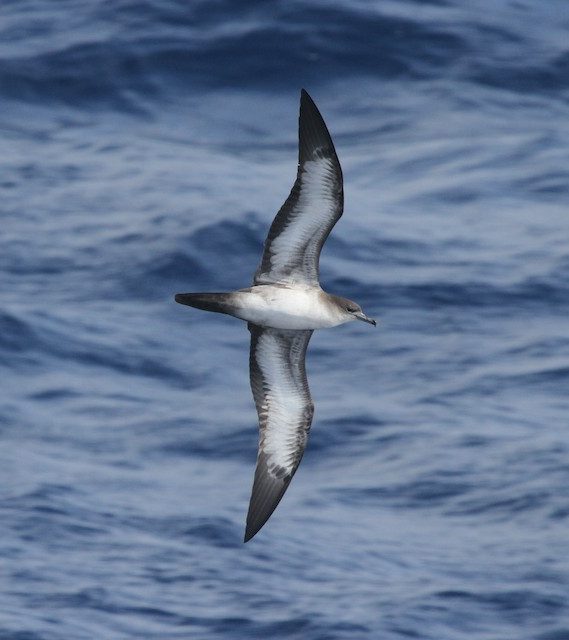
Wedge-tailed Shearwater, pale morph, showing mostly white underparts. (East of Chichi-jima, Bonin Islands, Japan; April 24, 2012.) © James Holmes

Wedge-tailed Shearwater, pale morph. (Ogasawara Islands, Japan; May 28, 2017.) © Lars Petersson
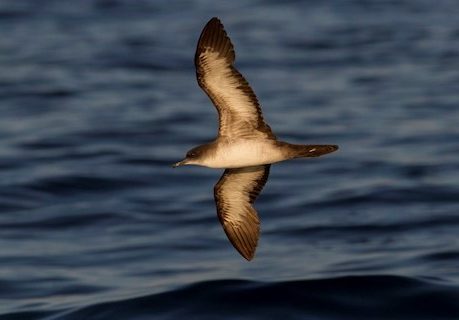
Wedge-tailed Shearwater, pale morph, showing typical underparts pattern. (Offshore from Santa Cruz Huatulco, Oaxaca, Mexico; December 4, 2017.) © Jacob Drucker
Pale Morphs. Underparts are mostly white, usually with a dark undertail. The underwings are white framed by black tips and leading and trailing edges.
The upperparts are mixed dark and white, often with a variable scaled pattern. The crown, tail, and primaries are often distinctly darker.
The palest populations are those in the western Pacific. Moving east toward Hawaii, the coloration becomes darker on average and more variable.
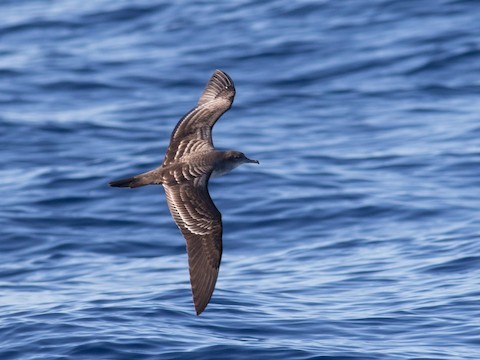
Wedge-tailed Shearwater, pale morph with strong contrast in upperparts. (Offshore from Kailua-Kona, Big Island, Hawaii; January 25, 2020.) © Matthew Sabatine

Wedge-tailed Shearwater, pale morph with strong contrast in upperparts. (Near Isla de Coíba, Panama; February 29, 2020.) © Cameron Eckert

Wedge-tailed Shearwater, pale morph with mostly dark upperparts. (Offshore from Santa Cruz Huatulco, Oaxaca, Mexico; March 5, 2017.) © Matthew Grube
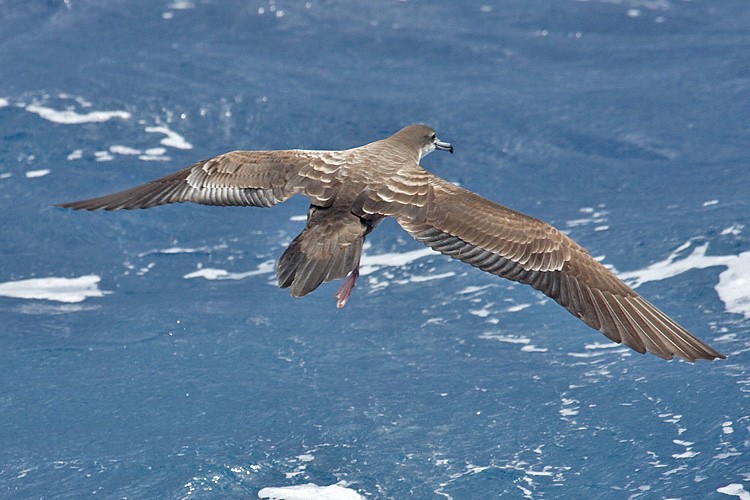
Wedge-tailed Shearwater, pale morph—note pink feet and blue bill. (East of Chichi-jima, Bonin Islands, Japan; April 24, 2012.) © Tony Morris

Wedge-tailed Shearwater, pale morph. (Offshore from Nihoa, Hawaii; March 31, 2020.) © Eric VanderWerf

Wedge-tailed Shearwater, pale morph with mostly dark upperparts. (Offshore from Tropic Star Lodge, Darién, Panama; June 10, 2017.) © William Hull
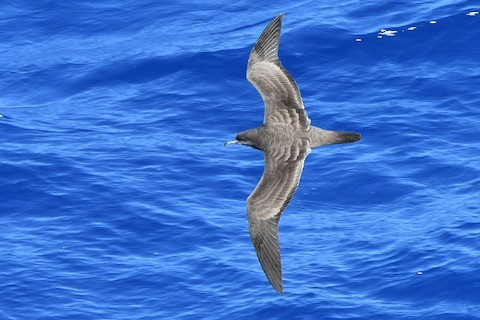
Wedge-tailed Shearwater, atypical morph with dark underparts and pale upperparts. (Offshore from the Na Pali Coast, Kauai, Hawaii; August 19, 2019.) © Lewis Gray
Dark Morphs. The upperparts and underparts are mostly uniform, but the tone varies regionally, individually, and due to lighting.
The upperparts often show a muted version of the scaled pattern typical of pale morphs.
The underparts sometimes appear variably paler. Unlike most similar species, dark morphs usually show only subtly paler markings on the underwings.
The blackest populations seem to be those of the southern Indian Ocean and Polynesia. The populations of the southwestern Pacific tend to appear sooty-gray (strongly resembling Flesh-footed, Sooty, and Short-tailed Shearwaters), but show wide variation.
Some dark morphs appear distinctly warm-brown rather than blackish or sooty-gray, possibly due to feather-wear. This seems most prevalent in Indian Ocean populations.
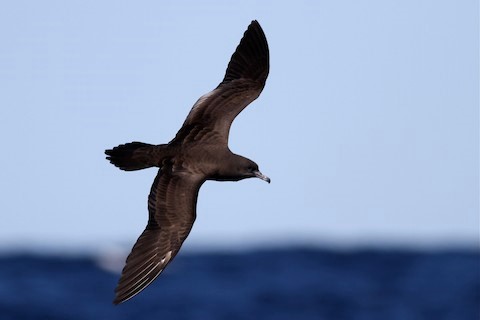
Wedge-tailed Shearwater, dark morph, appear all-blackish above. (Offshore from Southport, Queensland, Australia; August 21, 2010.) © Chris Wiley

Wedge-tailed Shearwater, dark morph, appearing all-sooty-gray above. (Offshore from Southport, Queensland, Australia; Noember 16, 2013.) © Deborah Metters
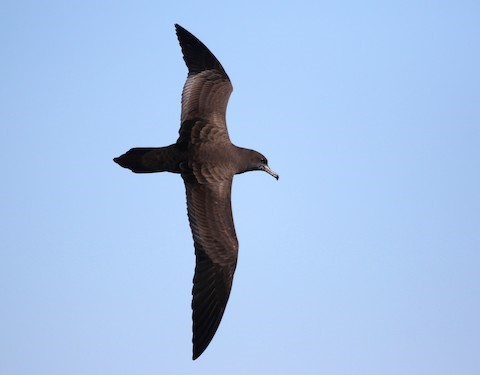
Wedge-tailed Shearwater, dark morph showing atypical gray-and-black pattern on upperparts. (Offshore from Southport, Queensland, Australia; August 17, 2019.) © Stuart Kelly
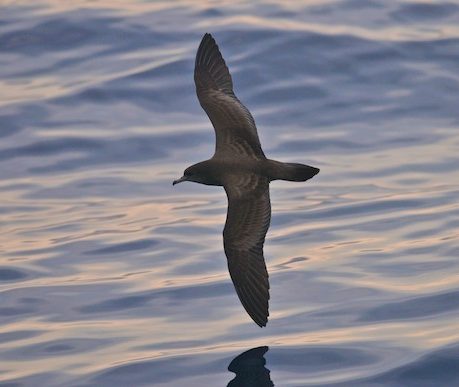
Wedge-tailed Shearwater, dark morph in low light, showing subtle pale pattern on secondary coverts, tertials, and back. (Offshore from Sydney, New South Wales, Australia; October 8, 2011.) © Peter Carlsson

Wedge-tailed Shearwater, dark morph, appearing dark-brown above, with paler edges. (Offshore from Kiama, New South Wales, Australia; December 9, 2017.) © Nick Bonomo
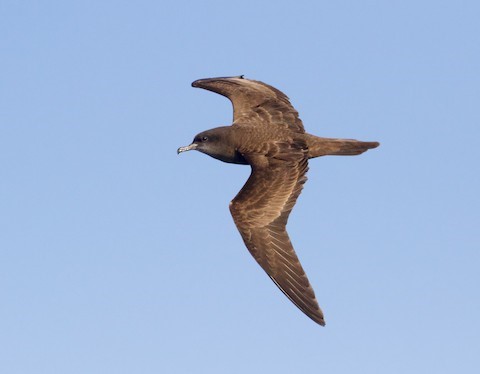
Wedge-tailed Shearwater, dark morph, appearing brown overall and showing contrasting paler panel on wing coverts. (Offshore from Green Cape, New South Wales, Australia; March 4, 2018.) © Scott Baker

Wedge-tailed Shearwater, dark morph with tail fully fanned out. (Offshore from Kiama, New South Wales, Australia; December 9, 2017.) © Ian Davies
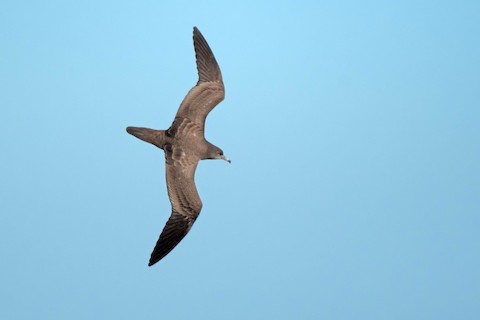
Wedge-tailed Shearwater, dark morph showing atypical gray-and-black pattern on upperparts. (Offshore from Southport, Queensland, Australia; August 10, 2019.) © Terence Alexander
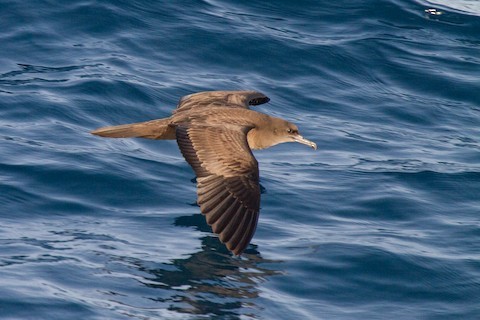
Wedge-tailed Shearwater, dark morph appearing mostly cinnamon-brown overall. (Offshore from Khor Kalba, Fujairah, United Arab Emirates; May 25, 2011.) © Tommy Pedersen

Wedge-tailed Shearwater, dark morph showing warm-brown underparts. (Offshore from Khor Kalba, Fujairah, United Arab Emirates; May 25, 2011.) © Tommy Pedersen
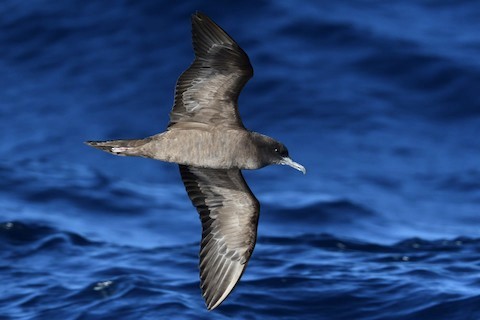
Wedge-tailed Shearwater, dark morph showing medium-pale-gray underparts and darker-looking head. (Offshore from Southport, Queensland, Australia; April 28, 2019.) © Deborah Metters

Wedge-tailed Shearwater, dark morph appearing sooty-gray overall with faint mottling. (Offshore from Kiama, New South Wales, Australia; February 27, 2016.) © Luke Seitz

Wedge-tailed Shearwater, dark morph, showing subtle underwing pattern. (Offshore from Mooloolaba, Queensland, Australia; January 9, 2016.) © Jacob Drucker
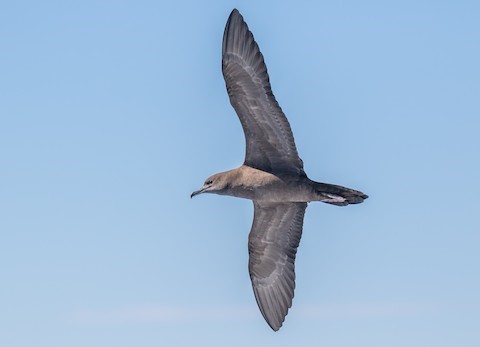
Wedge-tailed Shearwater, dark morph showing medium-pale underparts. (Offshore from Kiama, New South Wales, Australia; August 15, 2019.) © Louise Summerhayes
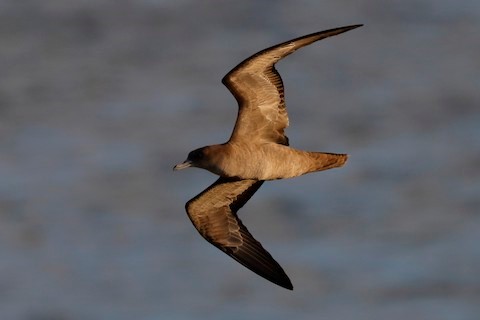
Wedge-tailed Shearwater, dark morph showing medium-pale-gray underparts and darker-looking head. (Ka’ena Point, Oahu, Hawaii; July 8, 2018.) © Sharif Uddin

Wedge-tailed Shearwater, dark morph of the Indian Ocean population with cinnamon-brown plumage. (Offshore from Khor Kalba, Fujairah, United Arab Emirates; May 25, 2011.) © Tommy Pedersen
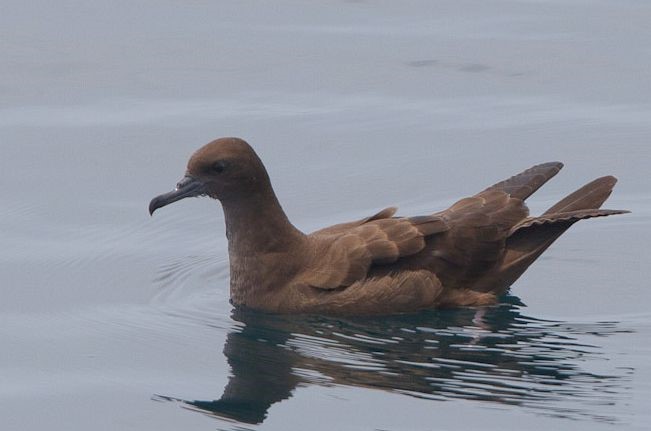
Wedge-tailed Shearwater, dark morph of the Indian Ocean population with warm-brown plumage. (Offshore from Kannur, Kerala, India; May 28, 2011.) © Mike Prince

Wedge-tailed Shearwater, dark morph, showing uniform sooty-gray plumage. (Offshore from Southport, Queensland, Australia; Noember 16, 2013.) © Deborah Metters
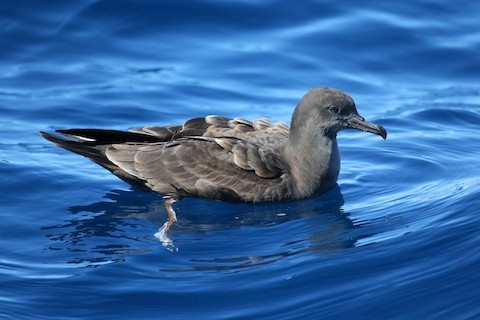
Wedge-tailed Shearwater, dark morph with uniform sooty-gray plumage. (Offshore from Southport, Queensland, Australia; August 17, 2019.) © Stuart Kelly
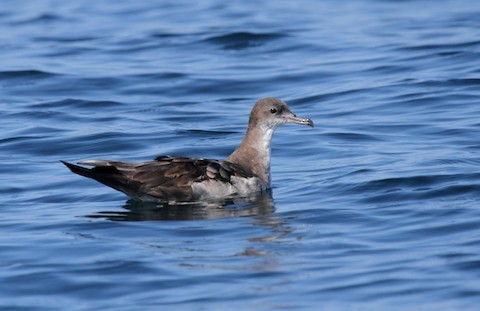
Wedge-tailed Shearwater, pale morph showing pinkish bill and pale head. (Offshore from Santa Cruz Huatulco, Oaxaca, Mexico; March 5, 2017.) © Matthew Grube
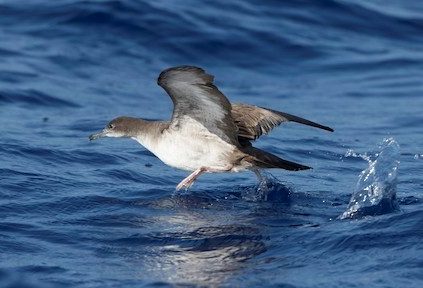
Wedge-tailed Shearwater, pale morph, showing pale pink feet. (Offshore from Kalaoa, Big Island, Hawaii; September 17, 2017.) © Brian Sullivan

Wedge-tailed Shearwater, pale morph with pale-brown upperparts and pale-gray bill. (Offshore from Kailua-Kona, Big Island, Hawaii; October 26, 2018.) © Garrett Lau
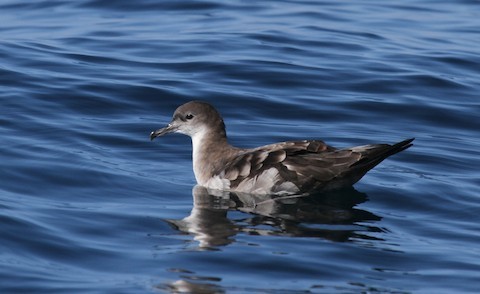
Wedge-tailed Shearwater, pale morph showing contrasty dark and light plumage on upperparts. (Offshore from Santa Cruz Huatulco, Oaxaca, Mexico; March 5, 2017.) © Matthew Grube

Wedge-tailed Shearwater, pale morph in nesting colony. (West Lake Trail, Midway Islands, Hawaii; December 2 2011.) © Cameron Rutt

Wedge-tailed Shearwater, pale morph in nesting colony—a relatively dark individual with a bluish bill. (Kilauea Point National Wildlife Refuge, Kauai, Hawaii; June 27, 2012.) © Daniel Lebbin
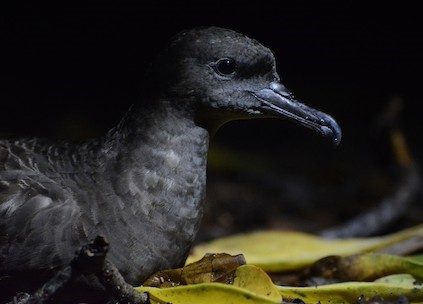
Wedge-tailed Shearwater, dark morph in nesting colony—an exceptionally dark individual with a black bill. (Heron Island, Queensland, Australia; March 22, 2018.) © Bridget Spencer
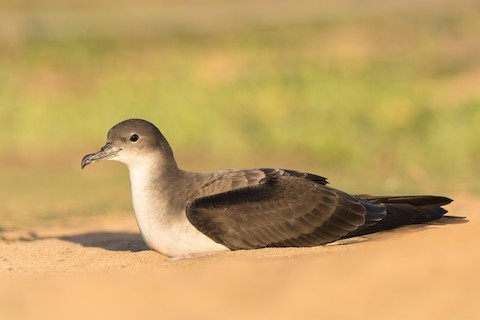
Wedge-tailed Shearwater, pale morph in nesting colony. (Ka’ena Point, Oahu, Hawaii; May 5, 2017.) © Sharif Uddin

Wedge-tailed Shearwater, pale morph in nesting colony—an exceptionally pale individual with a horn-colored bill. (Kilauea Point National Wildlife Refuge, Kauai, Hawaii; November 5, 2009.) © Ken Langelier

Wedge-tailed Shearwater, dark morph adult and recently hatched chick in nesting colony. (Round Island, Mauritius; December 31, 2006.) © Shane McPherson
Cf. Buller’s Shearwater. Buller’s and Wedge-tailed Shearwaters are similarly proportioned, with approximately the same measurements, thin bills, and wedge-shaped tails. Buller’s is distinctively patterned above and gleaming white below, so it is rarely misidentified. However, some pale morph Wedge-tailed have approximately the same pattern as Buller’s on their upperparts—not as bold, but similar enough for confusion. In such cases, the underwing patterns are more reliable for identification: essentially all-white on Buller’s versus white-centered with dark edges and broad dark tips on Wedge-tailed.
Cf. Streaked Shearwater. Some pale morph Wedge-tailed have approximately the same plumage color and pattern as some Streaked Shearwaters, with similar whitish scaling on the upperparts. Streaked averages a little larger than Wedge-tailed, but they are similarly proportioned and both have wedge-shaped tails. Wedge-tailed is so variable that generalizations are difficult, but two plumage differences are very consistent.
First, Streaked usually shows a pale face (often including the forehead) and distinct streaking elsewhere on the head, whereas pale morph Wedge-tailed usually has an unstreaked, all-dark head, including the face. Second, although both species’ underwings typically have whitish linings with contrastingly dark tips and trailing edges, Streaked usually has many dark streaks on the wing linings—especially along the leading edge and past the wrist. Wedge-tailed can show some streaks there as well, but typically not as pronounced as on Streaked.
Cf. Pink-footed Shearwater. Some pale morph Wedge-tailed have approximately the same plumage color and pattern as Pink-footed Shearwater. In most such cases, Wedge-tailed has more extensively white underwing linings, although this difference might be subtle. Pink-footed is somewhat larger overall, and proportionately heavier, but the most reliable, objective distinction between them is the bill shape—Pink-footed’s bill is both shorter and thicker than Wedge-tailed’s.
Cf. Flesh-footed Shearwater. Dark morph Wedge-tailed overlaps widely with Flesh-footed Shearwater in Australian waters, and the two can have effectively identical plumage (see photos below). Flesh-footed is somewhat larger and bulkier than Wedge-tailed, but this difference is difficult to judge without a side-by-side comparison. Some Wedge-taileds clarify their identity by showing an unambiguously long, wedge-shaped tail. Otherwise, the most reliable, objective distinction between them is the bill shape—Flesh-footed’s bill is both shorter and thicker than Wedge-tailed’s.
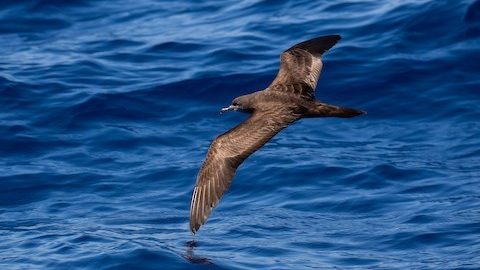
Wedge-tailed Shearwater—note long, thin bill. (Offshore from Brisbane, Queensland, Australia; March 24, 2019.) © Louis Backstrom
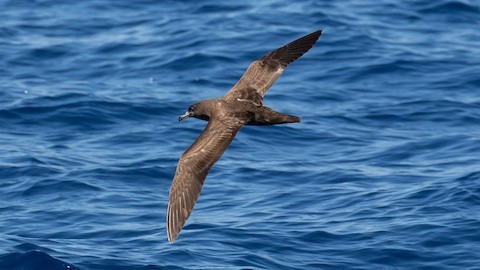
Flesh-footed Shearwater—note short, thick bill. (Offshore from Brisbane, Queensland, Australia; March 24, 2019.) © Louis Backstrom

Wedge-tailed Shearwater—note long, thin bill. (Offshore from Southport, Queensland, Australia; April 28, 2019.) © Deborah Metters

Flesh-footed Shearwater—note short, thick bill. (Offshore from Southport, Queensland, Australia; April 28, 2019.) © Deborah Metters

Wedge-tailed Shearwater—note long, thin bill. (Offshore from Southport, Queensland, Australia; Noember 16, 2013.) © Deborah Metters
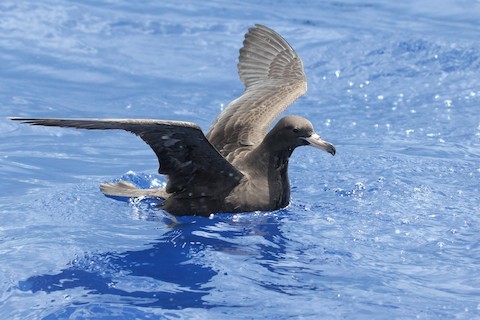
Flesh-footed Shearwater—note short, thick bill. (Offshore from Southport, Queensland, Australia; Noember 16, 2013.) © Deborah Metters
Cf. Sooty Shearwater. Dark morph Wedge-tailed can have plumage tones and pattern that are effectively identical to those of Sooty Shearwater. They are approximately the same size overall and have similar bills—although some Wedge-tailed have pale bills and most have pale, pinkish feet, unlike Sooty. Some Wedge-taileds clarify their identity by showing an unambiguously long, wedge-shaped tail. Another fairly consistent distinction is underwing pattern. This varies in both species, but most Sooty Shearwater show a strong contrast between white underwing linings and dark flight feathers whereas dark morph Wedge-tailed tends to have little contrast between the wing linings and the flight feathers (like Short-tailed rather than Sooty).
Cf. Short-tailed Shearwater. Dark morph Wedge-tailed often has plumage that is effectively identical to that of a typical Short-tailed Shearwater. Wedge-tailed is larger, with significantly longer wings, tail, and bill than Short-tailed, so in most cases they should be readily distinguishable. At some angles, however, they can appear quite similar as both have “gentle” faces compared to other shearwaters.
Notes
Monotypic species.
References
BirdLife International. 2018. Ardenna pacifica. The IUCN Red List of Threatened Species 2018: e.T22698175A132631353. https://dx.doi.org/10.2305/IUCN.UK.2018-2.RLTS.T22698175A132631353.en. (Accessed July 28, 2020.)
Brazil, M. 2009. Birds of East Asia. Princeton University Press.
eBird. 2020. eBird: An online database of bird distribution and abundance. Cornell Lab of Ornithology, Ithaca, N.Y. http://www.ebird.org. (Accessed July 28, 2020.)
Harrison, P. 1983. Seabirds: An Identification Guide. Houghton Mifflin, Boston.
Howell, S.N.G. 2012. Petrels, Albatrosses & Storm-Petrels of North America. Princeton University Press.
Howell, S.N.G., and S. Webb. 1995. A Guide to the Birds of Mexico and Northern Central America. Oxford University Press.
Howell, S.N.G., and K. Zufelt. 2019. Oceanic Birds of the World. Princeton University Press.
Pratt, H.D., P.L. Bruner, and D.G. Berrett. 1987. A Field Guide to the Birds of Hawaii and the Tropical Pacific. Princeton University Press.
Pratt, H.D. 1993. Enjoying Birds in Hawaii: A Birdfinding Guide to the Fiftieth State (Second Edition). Mutual Publishing, Honolulu, Hawaii.
Pyle, R.L., and P. Pyle. 2017. The Birds of the Hawaiian Islands: Occurrence, History, Distribution, and Status. Version 2 (January 1, 2017). http://hbs.bishopmuseum.org/birds/rlp-monograph/. B.P. Bishop Museum, Honolulu, Hawaii.
Ridgely, R.S., and J.A. Gwynne. 1989. A Guide to the Birds of Panama (Second Edition). Princeton University Press.
Xeno-Canto. 2020. Wedge-tailed Shearwater – Ardenna pacifica. https://www.xeno-canto.org/species/Ardenna-pacifica. (Accessed July 29, 2020.)
